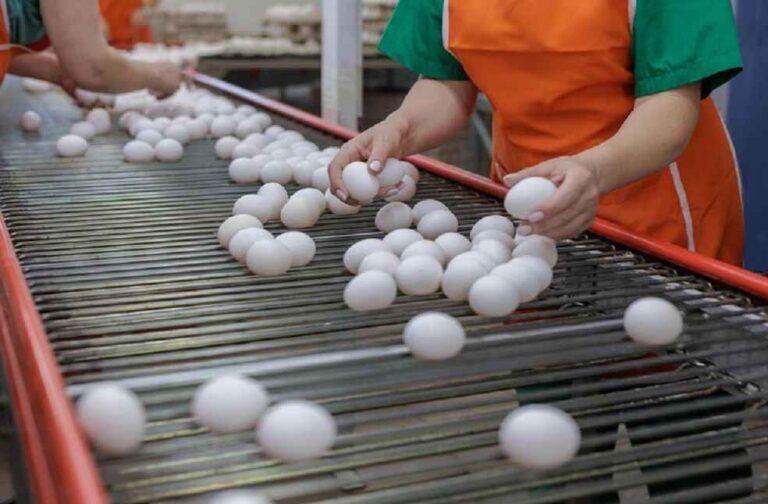The U.S. government is actively seeking egg imports from Europe and other regions to combat a severe domestic shortage that has driven egg prices in grocery stores to record highs.
The U.S. Department of Agriculture (USDA) has reached out to several European nations, including Germany, Italy, Poland, and Sweden, to address the supply deficit affected by a widespread outbreak of avian influenza. However, the effort faces multiple hurdles, primarily stemming from differences in food safety standards and the limited availability of surplus eggs in Europe due to their own bird flu outbreaks and increased local demand ahead of Easter.
A key obstacle lies in the contrasting approaches to salmonella prevention. In the U.S., regulations mandate that fresh eggs be washed and refrigerated before sale. European Union (EU) rules require that Grade A eggs remain unwashed and are typically sold without refrigeration to preserve their natural protective coating. “These are two systems that could not be more different,” noted Hans-Peter Goldnick, President of the German Egg Association.

Poland, one of Europe’s major egg exporters, received inquiries from the U.S. about potential exports. Katarzyna Gawrońska of the National Chamber of Poultry and Feed Producers said the difference in washing standards is a crucial point under consideration. Polish authorities are assessing whether the country can meet U.S. safety criteria, including having a compatible inspection system and being free of bird flu outbreaks.
EU law generally prohibits washing eggs, but exceptions exist in countries that historically authorised such practices. For instance, washed eggs are common in Sweden. Still, both Sweden and Norway have informed the U.S. that they do not have surplus eggs to supply.
Given these constraints, any European contribution to U.S. needs is expected to come in the form of powdered, frozen, or processed eggs rather than fresh shell eggs. These products are pasteurized and widely used in commercial food production, including baked goods, pasta, mayonnaise, and institutional kitchens. Gawrońska confirmed that Poland could provide very large volumes of egg-processing products if certified by U.S. authorities.
Elsewhere in Europe, American efforts have met similar limitations. Italian agricultural group Coldiretti reported that producers in the Veneto region could not spare eggs, as Italy struggles to meet its own demand amid ongoing bird flu challenges. Germany faces a comparable situation, with local production covering only 73% of national demand and daily imports from the Netherlands filling the gap. “We can collect around 45 million eggs a day, and the U.S. is short by about 50 million eggs a day—that shows how difficult it is,” Goldnick explained.

Other countries contacted by the U.S. include Austria, Spain, Norway, and Denmark. While exact figures remain undisclosed, USDA officials have confirmed new egg supply agreements with South Korea and Turkey in recent months.
Brazil, traditionally a minor egg exporter, saw a 93% year-on-year increase in egg shipments to the U.S. in February, according to the Brazilian Association of Animal Protein. However, the presence of Newcastle disease—a highly contagious avian virus—has limited Brazil’s potential to become a major U.S. supplier.
While increased imports of liquid, frozen, and dried eggs may ease some pressure, the USDA revealed that the U.S. produced 720 million fewer table eggs in February 2025 compared to the same month the previous year—a nearly 10% drop. In response, the U.S. has reduced its own egg exports to retain more for domestic use.
Despite the crisis, the U.S. egg market is beginning to stabilize. No major avian flu outbreaks have been reported in nearly a month, and wholesale prices have declined sharply—from a peak of $8.15 per dozen on February 21 to $3.27 per dozen by March 21. Consumers are starting to see price reductions at retail levels, though demand related to Easter and Passover could cause another short-term spike.
Political tensions between the U.S. and Europe, including tariffs and diplomatic frictions during President Donald Trump’s second term, have not deterred European producers from considering American requests. The EU remains one of the U.S.’s largest trading partners, despite being subject to tariffs on steel, aluminum, and automobiles, with reciprocal EU tariffs looming.
LATEST NEWS | Egg Imports from Turkiye and South Korea to Ease U.S. Price Surge



